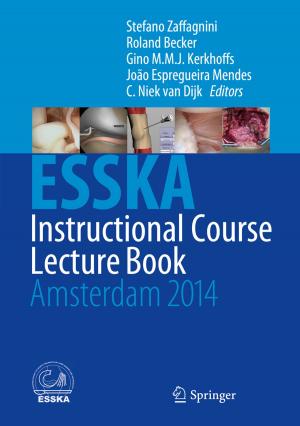Onychomycoses
Local Antimycotic Treatment
Nonfiction, Health & Well Being, Medical, Specialties, Dermatology, Science & Nature, Science, Biological Sciences, Biochemistry| Author: | ISBN: | 9783642754098 | |
| Publisher: | Springer Berlin Heidelberg | Publication: | December 6, 2012 |
| Imprint: | Springer | Language: | English |
| Author: | |
| ISBN: | 9783642754098 |
| Publisher: | Springer Berlin Heidelberg |
| Publication: | December 6, 2012 |
| Imprint: | Springer |
| Language: | English |
The human nail is formed from variably keratinized epithelial structures. The part of the nail organ which is the actual nail plate constitutes the end-product of keratinized cells produced by the matrix. The matrix cells lose their nuclei, become strati fied and keratinized, and are added to the firm nail plate al ready present. It is usually transparent or translucent, smooth and keratinous in structure, pushed forward by the keratin layer of the nail bed and growing out distally as a free edge over the finger/toe-tip. The transparent nail reveals the pink-coloured nail bed. Usually, a white half-moon shaped lunula is visible, extending under the proximal nail fold. The nail plate consti tutes a buttress to pressure. The rate of nail growth is greatest in the second and third decades oflife and declines slightly later. Increased nail growth may be noted during the summer and decreased growth in winter, in evident dependence on the peripheral circulation. Although the nail is not the primary site of attraction at a fleeting glance from others, changes in the nails are quite striking at a second look, and modern freedom of behavior means that changes in the toenails soon become very obvious, especially in women.
The human nail is formed from variably keratinized epithelial structures. The part of the nail organ which is the actual nail plate constitutes the end-product of keratinized cells produced by the matrix. The matrix cells lose their nuclei, become strati fied and keratinized, and are added to the firm nail plate al ready present. It is usually transparent or translucent, smooth and keratinous in structure, pushed forward by the keratin layer of the nail bed and growing out distally as a free edge over the finger/toe-tip. The transparent nail reveals the pink-coloured nail bed. Usually, a white half-moon shaped lunula is visible, extending under the proximal nail fold. The nail plate consti tutes a buttress to pressure. The rate of nail growth is greatest in the second and third decades oflife and declines slightly later. Increased nail growth may be noted during the summer and decreased growth in winter, in evident dependence on the peripheral circulation. Although the nail is not the primary site of attraction at a fleeting glance from others, changes in the nails are quite striking at a second look, and modern freedom of behavior means that changes in the toenails soon become very obvious, especially in women.















